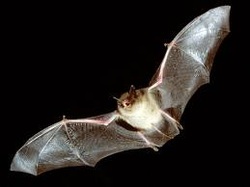
The continuing decline of little brown bats could have a devastating effect on the ecosystem, their natural pest-control skills has the potential to change the quality of our lives and restrict food sources. Fewer bats mean more insects and potentially more bites from disease-carrying mosquitoes and greater insect crop damage. A single bat can eat nearly 900,000 insects a year.
Scientists say bats in Pennsylvania and other East coast states are dying in great numbers due to white-nose syndrome, a fungus that causes hibernating bats to wake up every few days instead of every few weeks, according to the Organization for Bat Conservation. By doing so they deplete their fat reserves too soon and starve to death. Experts are claiming that these enormous declines in the bat populations will take hundreds of years to reverse.
Since white-nose syndrome was first noticed in a New York cave in 2006, more than a million hibernating bats have died, and the fungus has spread to 16 states, according to the federal Fish and Wildlife Service.
The syndrome is still a relatively new problem and its future impact is unknown. The Pennsylvania Game Commission claim there has been a 90% decline in four of the six native bat species and predict that there will be some changes in insect diversity as a result. They are seeing enormous declines in this year's bat census, at one location in Mifflin County, the bat population went from 23,000 to 50 in three years. The Commission has asked people to report bat sightings to help keep track of locations with survivors. At only 4 inches long, little brown bats are tough to spot. Hopefully each dusk more will appear.
 RSS Feed
RSS Feed
